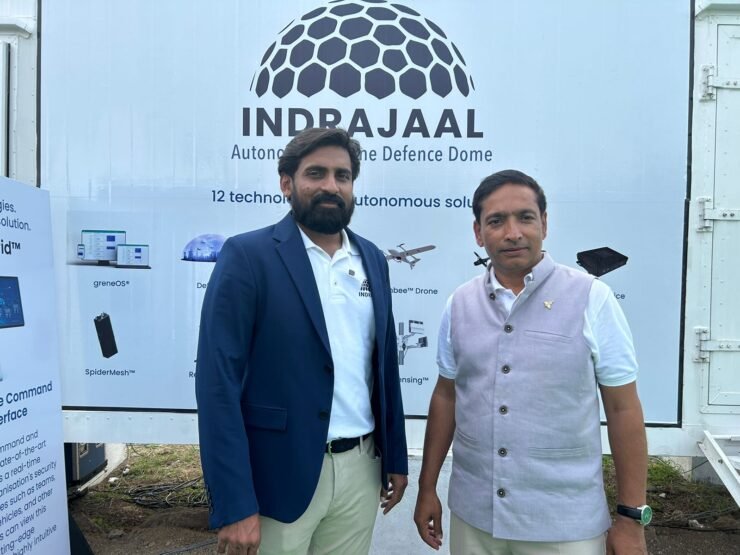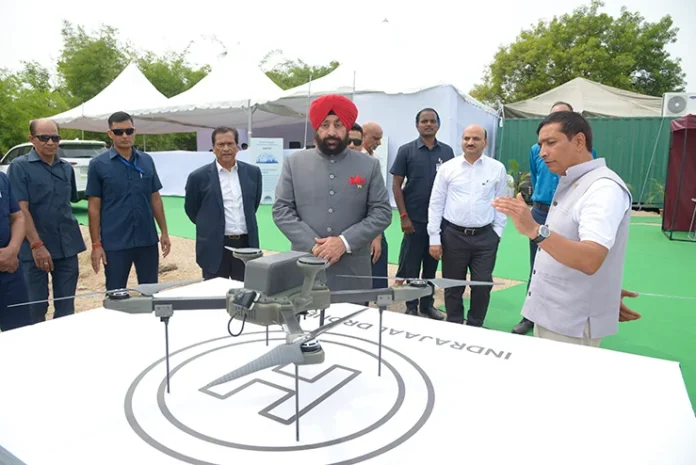In the run-up to the mega G-20 Summit (September 9-10) in the Capital, a Delhi Police advertisement in leading newspapers notifies all the conference venues as ‘no drone zones.’ The capital police have prohibited “flying of drones, unmanned aerial vehicle and remotely piloted aircraft systems till September 12.” But while prohibitory orders can be followed by the legal, loyal and obedient citizens who use drones for ceremonial, commercial or leisure purposes, what about the destructive-drones being operated by socially inimical elements?
Over the past few years, the whole world including India has encountered a significant surge in hostile UAV activities. Besides the ongoing Russia-Ukraine war and earlier the Armenia-Azerbaijan conflict, such hostile drones have been deployed to attack VVIP convoys and meetings.
Drones as Weapons
While Venezuelan President Nicolás Maduro was attacked with drone-bombs in 2018 (he escaped the assassination bid), top Iranian military commander Qasem Soleimani was not so fortunate during a drone strike in 2020 when his convoy was attacked by a drone outside the Baghdad airport (Iraq).
India has been hit by drone attacks from Pakistan which on an average daily drops weapons, money, and narcotics drugs in along the borders of Punjab. Few such incidents of smuggling via drones have also been reported from Rajasthan and Jammu and Kashmir too. China’s ability to attack border areas by swarm drone or loitering munitions is no longer a secret now.

Historical Perspective
Keeping in view the major terror attacks India has encountered in the past right from the Parliament attack in 2001 to Mumbai 26/11 (2008) and serial bomb blasts in the Capital Delhi (2005 & 2008) to Delhi High Court blast (2011), the Indian security agencies have to gear up for all the sub-conventional aerial threats. All these terror attacks were the brainchild of Pakistan-based, sponsored and funded terrorist organizations like Lashkar-e-Taiba (LeT) or Jaish-e- Mohammed. So, hostile drone technology falling into the hands of these Pakistan terror groups has always been a big cause of worry for Indian intelligence and security apparatus.
Security Preparations for the G-20 Summit
Delhi particularly the international airport and the Lutyens’ zone comprising the Bharat Mandapam (erstwhile Pragati Maidan) will witness movement of who’s who convoy in the Capital in the days to come. While the Indian Air Force (IAF) has begun a two-front military exercise ‘Trishul’ (4th-14th September) to keep all conventional aerial threats at bay, the Capital requires an umbrella of counter-drone measures. IAF’s helicopter carrying out sorties as part of G-20 rehearsals were spotted on Le Meridien Hotel in the heart of the Capital, suggesting Air Force is providing the required air-defence cover.
Cutting-Edge Solution: Grene Robotics’ Indrajaal
In such a scenario, a Hyderabad-based company Grene Robotics recently demonstrated its Autonomous Drone Defence Dome ‘Indrajaal’ to the select journalists including the author. Powered by Artificial Intelligence (AI), the company claims that Indrajaal is one of its kinds in the world where all types of drones and UAVs can be countered by a standalone system.
“Indrajaal is a combination of 12 unique layers of technology which has the ability to detect, identify, track and swiftly neutralise sub conventional aerial threats in real time.” Wing Commander MVN Sai, Director, Grene Robotics
According to the company, Indrajaal is the world’s only anti-drone system capable of protecting against nano, micro and large UAVs like recently developed Turkish Bayraktar. “Indrajaal is a combination of 12 unique layers of technology which has the ability to detect, identify, track and swiftly neutralise sub conventional aerial threats in real time”, said Wing Commander MVN Sai, the Director of Grene Robotics.
“From low Radar Cross Section (RCS) to medium and high altitude long endurance (MALE & HALE) UAVs, loitering munitions besides nano, micro and swarm drones, Indrajaal protects against all categories of sub-conventional aerial threats,” Wg Cdr Sai said during the demo of his company in the presence of Uttarakhand Governor Lt Gen Gurmit Singh (Retd). Lt Gen Singh had retired from the Indian Army in the year 2016 as Deputy Chief of Staff (Information Systems) before becoming the Governor of the state adjoining Tibet (China).
“Indrajaal marks a groundbreaking advancement in defence technology, poised to reshape the national security landscape and bolster our nation’s self-reliant military capabilities in the face of escalating drone threats,” declared Lt. Gen Gurmit Singh during a live media demonstration.

The Power of Integration
“While the Indian armed forces have already implemented various counter-drone measures, what sets Indrajaal apart is its unique integration of these technologies into a single system, all powered by AI,” said Kiran Raju, CEO of the company, emphasising the goal of staying one step ahead of drone threats through AI.
Overcoming Limitations
According to the company, radar-based detections, commonly used in existing counter-drone measures, are fraught with inaccuracies at low Radar Cross Section (RCS) and when operating close to the ground. These systems are also incapable of identifying the operating radio frequency. Jamming, another counter-measure, can merely delay a drone attack and is ineffective against swarm drone attacks. Similarly, laser weapons require large non-moving targets. However, Indrajaal offers solutions to these challenges.
‘Zombee Drone’ and ‘Sky Cop’
Among its 12 proprietary modular technologies, one notable feature is the ‘Zombee Drone,’ specially designed to mimic the behaviour of honeybees that protect their hive. This ‘fly and die’ drone actively seeks out and neutralises enemy drones that collide with it.
Another standout component is the ‘Sky Cop’ drone, aptly described as the ‘police force of the sky. Equipped with advanced sensors, cameras, and communication systems, it excels in monitoring and identifying unauthorized drones in real-time.
Integration for Enhanced Defence
“Indrajaal marks a groundbreaking advancement in defence technology, poised to reshape the national security landscape and bolster our nation’s self-reliant military capabilities in the face of escalating drone threats.” Gen Gurmit Singh, Governor, Uttarakhand
Indrajaal’s adaptability extends to its integration with civil and military networks, enabling the identification of ‘friend and foe’ drones—a crucial capability in an airspace expected to see a surge in friendly drones.
The ‘Weapon Fusion’ technology is yet another breakthrough, seamlessly integrating multiple airspace defence weapons into a unified, intelligent network. This approach mitigates inefficiencies and potential complications associated with deploying standalone weapons, ensuring optimal performance.”
The ‘Global Grid’ System
The ‘Global Grid’ command and control system offered by Indrajaal presents a state-of-the-art solution. It provides a real-time digital twin of an organization’s security apparatus and facilitates the management of resources, including teams, weapons, vehicles, and assets, all through a highly intuitive and user-friendly interface from a centralized command and control centre.

Expansive Coverage
To further enhance its capabilities, Indrajaal employs a high-speed wireless network known as ‘Spider Mesh,’ capable of covering an expansive area of up to 4,000 sq km—nearly double the size of the capital, Delhi. This wide coverage positions Indrajaal to revolutionize security measures and drone warfare across critical areas, from airports and VVIP convoys to nuclear plants, oil refineries, and border regions.
Towards a Secure Future
“In light of these remarkable capabilities, we have showcased the potential of our system. It is now up to the armed forces to harness Indrajaal for national security,” concluded Wg Cdr Sai (Retd).
The company reveals that in 2021, Indrajaal was successfully tested and deployed during the Independence Day celebrations at Red Fort, where Prime Minister Narendra Modi addressed the nation.
-The writer is a senior defence journalist and War-author. The views expressed are personal and do not necessarily reflect the views of Raksha Anirveda





